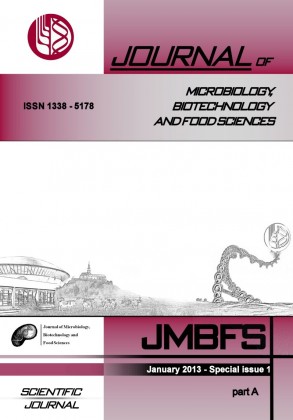THE TOXIC EFFECT OF 4-NONYLPHENOL ON MALE REPRODUCTIVE SYSTEM
Keywords:
endocrine disruptors, nonylphenol, Sertoli cells, Leydig cells, spermatozoa, toxicityAbstract
Reproductive system influences many environmental toxicants that present the serious risk to the reproduction of human and animals, including hormone-like compounds called endocrine disrupting chemicals (EDCs). The interest about EDCs increased during the last 50 years due to their interference with the development and functioning of the endocrine system in aquatic animals. One of these toxic contaminants is nonylphenol that has the negative impact on the reproductive parameters not only on fish, but also on amphibians and mammals. Nonylphenol can decrease male fertility following a disruption of testicular development, a damage of Sertoli and Leydig cells and a reduction of a count and motility of spermatReproductive system influences many environmental toxicants that present the serious risk to the reproduction of human and animals, including hormone-like compounds called endocrine disrupting chemicals (EDCs). The interest about EDCs increased during the last 50 years due to their interference with the development and functioning of the endocrine system in aquatic animals. One of these toxic contaminants is nonylphenol that has the negative impact on the reproductive parameters not only on fish, but also on amphibians and mammals. Nonylphenol can decrease male fertility following a disruption of testicular development, a damage of Sertoli and Leydig cells and a reduction of a count and motility of spermatozoa.Downloads
Download data is not yet available.
Downloads
Published
2013-02-01
How to Cite
LukáÄová, J., Kňažická, Z., Tvrdá, E., Massányi, P., & LukáÄ, N. (2013). THE TOXIC EFFECT OF 4-NONYLPHENOL ON MALE REPRODUCTIVE SYSTEM. Journal of Microbiology, Biotechnology and Food Sciences, 2(special issue 2), 1455–1468. Retrieved from https://office2.jmbfs.org/index.php/JMBFS/article/view/7476
Issue
Section
Biotechnology
License
Copyright (c) 2013 Jana LukáÄová, Zuzana Kňažická, Eva Tvrdá, Peter Massányi, Norbert LukáÄ

This work is licensed under a Creative Commons Attribution 4.0 International License.
All papers published in the Journal of Microbiology, Biotechnology and Food Sciences are published under a CC-BY licence (CC-BY 4.0). Published materials can be shared (copy and redistribute the material in any medium or format) and adapted (remix, transform, and build upon the material for any purpose, even commercially) with specifying the author(s).

